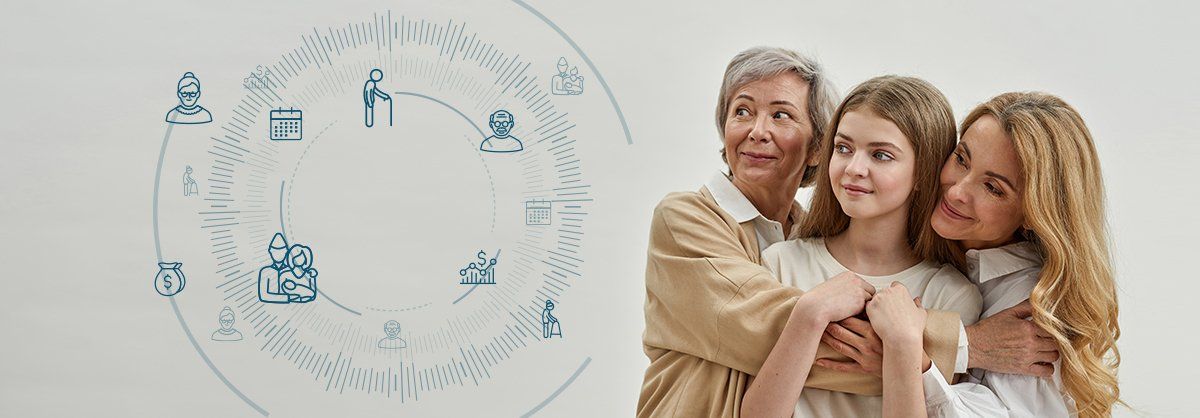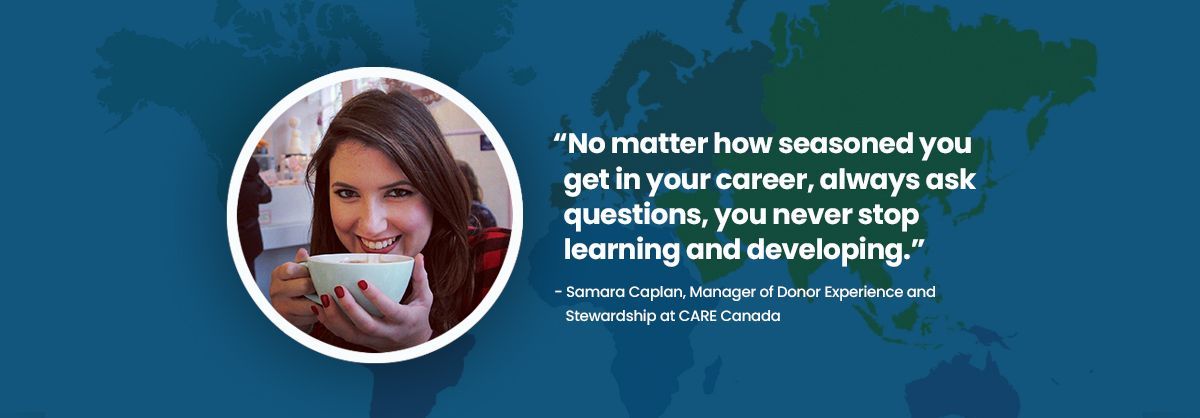Sargent Solutions Blog: September 19, 2022
Why age isn’t just a number when it comes to fundraising
Non-profits deal with numbers on a daily basis. How many donors? How many dollars raised? How many volunteers? But there’s one important number that’s often overlooked: donors’ age.

You only have to look around at your family and friends to see that different generations have different ways of communicating and connecting. Quite simply, they see the world through unique lenses based on when they were born.
These differences matter in fundraising. Not to say that you can define every individual’s donation priorities and preferences based solely on their age, but it’s key information that should shape your broader strategy.
Let’s take a look at some of the defining characteristics of each generation and how they affect donating attitudes and habits.
Generation Alpha, 2010-2024
Even the oldest members of this group are a few years away from high school and their first part-time jobs, but it’s never too early to put them on your radar. According to Mark McCrindle, the demographer who coined the name Generation Alpha, this cohort is on track to becoming the largest and wealthiest generation in the history of the world. In just a few years, they’ll outnumber the Baby Boomers, and they’re already influencing social media, pop culture and consumer trends. The fact that Generation Alpha shares a launch year with the first Apple iPad is telling: their entire lives have been saturated by screens.
What this means for fundraising:
There’s plenty of time to think about how you’ll reach this demographic, but their unprecedented digital literacy, short attention spans and high expectations as consumer will be important factors to consider in your communications.
Generation Z, 1995 - 2009
To a somewhat lesser extent than Generation Alpha, this generation was born into a world of digital technology and came of age using smartphones, tablets and social media. Members are true digital natives, part of the first generation to be constantly connected. They’re also the most racially and ethnically diverse generation in Canada’s history. While Generation Z tends to be highly educated, they’re more likely than any other age group to be employed in precarious work and have significant debt. Still, they’re driven to contribute to positive change in the world. One study found 60 per cent of Generation Z wants to have an impact on the world, compared with 39 per cent of Millennials.
What this means for fundraising:
Although this generation has yet to fully develop and contribute to fundraising efforts, non-profits should consider laying a foundation to see positive results from this generation in the future. This could mean creating digital outreach initiatives that appeal to Generation Z’s desire to make an impact, seeking their input on future fundraising priorities and highlighting small donation opportunities.
Millennials, 1980- 1994
This is a tech-savvy generation that prefers smartphones over any other device. Members are better educated than their grandparents, especially when it comes to women. In fact, more women than men in this group have completed at least a bachelor’s degree. In terms of their income and wealth, Millennials haven’t accumulated quite as much as older generations at the same age. This is partly due to their student loan burdens. With less expendable income, they tend to marry and buy homes later in life than their predecessors. Their preference for avoiding the pressures of ownership (not just of homes, but cars and other goods) has given rise to the “sharing economy.” On the flip side, Millennials are willing to invest in health and wellness products.
What this means for fundraising:
This generation makes most of their donations online, so having a compelling website with a quick and easy donation process is crucial. They’re also the most willing to donate through social media or text messages. Maintaining a strong digital presence is essential for engaging this up-and-coming generation, which has steadily rising income and is set to inherit some of their parents’ wealth.
Generation X, 1965- 1979
Although they were born in the age of writing and mailing, members of this generation have adapted to technological advancements. They came of age at the peak of emailing and websites, but most have evolved their communication habits in step with the shift to instant messaging and social media. The uncertain economic times in the 1980s and 1990s shaped their economic prospects, and they’re predicted to be the first generation that will be in a worse position for retirement than their parents. Yet the coming decades will see a major transfer of wealth from the baby boomers to Generation X and younger generations.
What this means for fundraising:
While this generation gives more than millennials, they share similar giving habits, such as a preference for donating online. They’re keen to give their time to good causes, with one of the highest volunteer rates (44 per cent) among the generations in Canada. Non-profits should aim to harness this energy, build trust in a generation that values transparency and target fundraising to preferred social media like Facebook.
Baby Boomers, 1946-1964
This generation grew up during times of social and political transformation, and they tend to value loyalty in relationships. They benefited from a strong economy during their prime earning years and are likely to be financially secure. Individuals and organizations often underestimate boomers’ technology skills, but in recent years many of them have begun to adapt to social media and mobile devices. Most own their own smartphones and tablets and prefer virtual communications as consumers.
What this means for fundraising:
Boomers are the most generous givers of all the generations. While more than half of boomers still mail in their donations, it’s a mistake to believe the stereotype that boomers aren’t donating online. To reach this group, focus on email appeals, user-friendly online donation forms, and consistent expressions of appreciation and gratitude.
Silent Generation, 1925-1945
Most of the people in the Silent Generation, also known as the Matures, were born during WWII and the Great Depression. Not surprisingly, they tend to have a strong work ethic and be resilient. They’re also known to have more traditional, conservative values. Yet this generation is no longer silent, rapidly adjusting to the age of social networking. In 2015, 22 per cent of Silent Generation members were on Facebook; by 2019 that number rose to 37 per cent.
What this means for fundraising:
While this is a shrinking demographic, they still give the most per capita each year and donate to the largest number of charities. While some members are open to online communications and donations, print communication is still an essential part of the donation process for the Silent Generation. Think direct mail, physical cheques and phone calls when you’re reaching out.
Interested in learning more about how to create successful campaigns for current generations and how to set the groundwork for the generations to come?
Sargent has more than 16 years’ experience delivering integrated solutions for non-profits and charities across North America.




